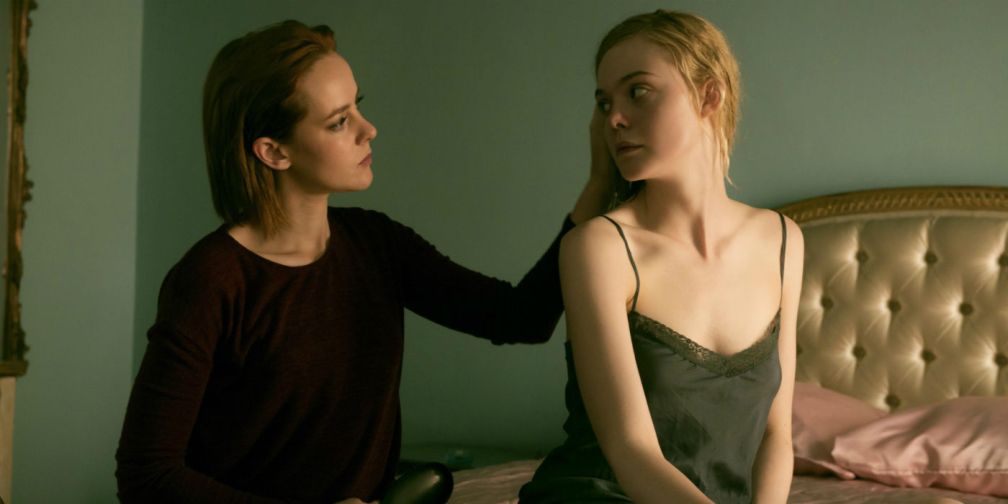Almost five months have passed since Nicolas Winding Refn introduced his latest movie, The Neon Demon (2016), and yet the discussion on whether this was a “good” movie or not, still hasn’t settled. With a score of 6.3 on IMDB, 57% on Rotten Tomatoes and 51 on Metacritic, the critics have never been this divided over a single movie. The writers at Indie Wire have put this movie on the worst movie/ biggest disappointment lists and, at the same time, on the best/potential future cult movie lists. While I can argue how any movie that would cause this big of a fuss between the audiences and the critics is, in a way, an indisputably good movie, since it does have a lasting effect (just try bringing it up in a company of a few aspiring cinephiles, and you will have yourself a show), I doubt it has the potential of ever gaining the cult status, for all the same reasons. I have already written a review on The Neon Demon months ago, but I still feel like I’ve left a few crucial things unsaid, so these are my final thoughts on Winding Refn’s extravagant flick, and why it was a cause of a biggest movie dilemma in the recent years.
The Neon Demon, as we all know, tells a tale of the shallowness of our society fueled by narcissism, with a very aesthetical, artistic approach and a pleasing imagery. The most common critique is that the film’s story is told in that exact same way, without any depth, and yet the part of the crowd that enjoyed this movie argues that the brilliance of it lies specifically in this fact, and that the whole movie, not just the plot within it, stands as some sort of a statement against our oh so selfie oriented culture. If that would be the case, then Winding Refn is a bloody genius. And right here is the point of the divide, a point where it all comes down to the spectator’s personal taste, or the things that animate a certain viewer. A series of beautiful photographs, perfectly symmetrical, perfectly balanced. Colours that scream at you and seduce you at the same time. And a movie that is a satire of itself.

Well, after watching a movie which moves me in this or that way, I always like to do a little research on the director and his intentions. So I watched a few interviews with Winding Refn, and he went on about his motivation for making the movie. And it was simple – his wife wanted him to make a movie for her, so he did, and he wanted to make it all pretty and girly, but with a lot of blood. And that’s it. That is literally all he said. He just wanted to make a movie to please his wife’s aesthetic movie aspirations, after making a few “manly” films. Sigh.
The point I wish to make is somewhat within the borders of that which Roland Barthes discussed in his book Camera Lucida (1980), where he talks about what moves people when they look at a photograph. And since this is a very photographical movie, it seems appropriate to approach it in the same manner. Barthes specified a distinction between a pornographic and an erotic image, where pornography leaves little to the mind and imagination, but an erotic image makes us think, makes us wonder and imagine what lies beyond that which is seen, and the unseen is what triggers our fetishes, our deepest emotions and desires. The Neon Demon is by these standards a pornographic movie, one which leaves little to nothing to the imagination. It is very self-explanatory, leaving the viewer no blank space for the interpretation. Barthes explained this while talking about a photograph of a nun and some drag queens, a photo which imposes its meaning on the viewer, with an obvious intention to merely shock us. To paraphrase him, to be shocked is not to be traumatized by that which was seen. The real shock lies within the realization of the unseen, within the dynamics of the blind spot.
And precisely that is the dimension which The Neon Demon lacks. For “the screen is not a frame, but a hideout”.
And just to finish off this little rambling of mine, I hope, at the end, the director’s wife was pleased with a pretty, pretty movie with some of the most impotent female characters in recent movie history, who completely lack in depth and are all simply reduced to their own vanity and bruised ego, with no tools or motivations to break out from that vicious, culturally imposed cycle.
But kudos for breaking some of the crucial movie rules, such as eliminating the lead character in the middle of the plot.
